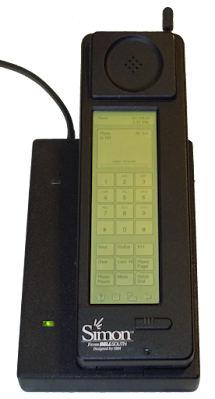- Get link
- Other Apps
- Get link
- Other Apps
The invention of the smartphone revolutionized the way we communicate, work and live. It marked an important moment in technological history, bringing together a variety of features into a single device that could fit in the palm of our hand. While the concept of the smartphone has its roots in earlier inventions, the first true smartphone as we know it today appeared in the late 20th century.
Early days of mobile phones
Before smartphones, mobile phones were primarily used for voice communications. The first handheld mobile phone call was made on April 3, 1973 by Martin Cooper, an engineer at Motorola. This phone, the Motorola DynaTAC 8000x, weighed about 2.2 pounds and had a talk time of about 30 minutes. However, these early mobile phones were limited to voice calls and lacked the features that characterize modern smartphones.
The emergence of personal digital assistants (PDAs)
The idea of combining mobile phones with computing capabilities can be traced back to the concept of the personal digital assistant (PDA). PDAs were handheld devices designed to help individuals organize information, manage schedules, and perform basic computing tasks. In the early 1990s, devices such as the Apple Newton and the IBM Simon included touchscreens and basic applications, foreshadowing the integration of computing functions into mobile devices.
Birth of the first smartphone
The true birth of the smartphone can be attributed to the IBM Simon, also known as the IBM Simon Personal Communicator (SPC). Developed by IBM engineer Frank Canova Jr., IBM Simon was introduced to the public on August 16, 1994. Unlike its predecessors, the IBM Simon combined the functionality of a mobile phone with computing features such as a calendar, address book and so on. Even simple games.
The IBM Simon had a monochrome touchscreen interface, a stylus for navigation, and a full QWERTY keyboard for text input. Although its design may seem rudimentary compared to today's sleek smartphones, the IBM Simon laid the foundation for the convergence of communications and computing in a single handheld device.
Key Features of IBM SIMON
- Touchscreen Interface: IBM Simon's touchscreen allowed users to interact with devices in a more intuitive way, paving the way for the touchscreen-centric smartphones we use today.
- Applications: In addition to basic phone functions, IBM Simon introduced the concept of downloadable applications. Users could add new features and functionality to their devices, a precursor to the app stores we now have on modern smartphones.
- Address Book and Calendar: The inclusion of the Address Book and Calendar is an important step toward integrating organizational tools into mobile devices.
- Battery life and size: Despite its innovations, the IBM Simon had limitations, including relatively short battery life and a bulky design compared to contemporary smartphones.
Heritage and development
Although IBM Simon may not have achieved mass adoption, it laid the groundwork for later advances in mobile technology. Over the past few years, smartphones have evolved rapidly, featuring faster processors, better displays and an ever-expanding range of features. Companies like Nokia, BlackBerry, and Palm played key roles in shaping the smartphone landscape before the rise of the iPhone and the proliferation of Android-powered devices in 2007.
In conclusion, the invention of the first smartphone can be attributed to IBM's Simon, which emerged in 1994 as a groundbreaking device combining mobile communications with computing capabilities. From its humble beginnings, the smartphone has evolved into an indispensable device that shapes the way we connect, work, and navigate the world. The journey from IBM Simon to today's sophisticated smartphones reflects the constant pursuit of innovation in an ever-evolving field of technology.
- Get link
- Other Apps

Comments
Post a Comment